

|
|||
|
Important Things to Consider - A Guide: Dating Lighters - As more lighter collectors have researched the lighters of the teens to the forties they have made it easier to date when lighters were made. Company records may give one date, advertisements may appear with another date, stores may have carried the lighters for years afterward. Sometimes, purchasers had a lighter engraved with a date that was years after it was made. Most of the dates on the lighters in this book have a “ca.” or “circa” in front of them. It means that the date of the lighter is not just limited to the date in the book. Collectors appreciate specific dates, but take each date with a period of leeway. Condition - Condition Counts. An item in mint condition may be worth several times more than one in very fine condition. Damage to a visible part may be a major problem. An item with a piece missing may be worth 25% of one with the piece present. Repair is often possible, but to repair the item, one needs parts or another of the same with that part. Ask yourself if the price is still a bargain when you have to locate and cannibalize another lighter for parts. The items in this book are priced in excellent condition although the actual piece shown may vary from good to mint in the box. Original Parts - Lighters should have original parts and finishes. Refinishing an item will in most instances, not increase its value and will often decrease its value. An “honest” finish or patina, indicating that the item has seen use, is preferred. Availability or “Will I ever find another?” - Some items are always available at antique shows or specialized dealers. Ask yourself if it is just a matter of dollars to acquire an example or is this a once in a lifetime chance to find that item? With a once in a lifetime item, condition should not be the major determining factor. Many items were ephemeral or short lived. All that is left may just be a relic or remembrance of the whole item. On those items, you may never get another chance to buy one and the person behind you may be waiting for you to put it down so that he or she can buy it. Demand - What does it mean to you? To those growing up in the period covered by this book, some items bring back a flood of memories. To some people, seeing an item is enough. To others, possessing it is required, regardless of the price. There are collectors a plenty in the field of lighter collecting and the asking price reflects this enormous demand. Buy the Best - In comparing lighter collectibles to other collecting fields, it is expected that prices on items will continue to rise. Higher prices may be a blessing in disguise. Some people have no incentive to sell a piece for only a few dollars, but if they can get “a lot of money” they will sell a piece. You will pay more but you will get a lighter that you may never have another chance to own. Collections can be put together for very little money, but, as has been proven true in every field of antique collecting, the best pieces in the best condition have held or increased in value at a greater rate than the more common pieces. Buy the best that you can afford. Remember, you will rarely regret having paid too much for an item, but you will always regret the good pieces that got away. Cost - A lighter collection need not cost a great deal of money. Some people collect newer items. Joining an organization or subscribing to a magazine can provide hundreds of leads to current items. Using your imagination, a nice collection can be put together within your budget. Exhibiting your collection at a local library can generate new leads to the type of material that you collect. Locating items - Lighters can be found at garage sales, antique stores, antique shows, flea markets, mail auctions and through ads in the antique collector newspapers. A good start may be to run an ad in your local newspaper or do an exhibit of your collection at a local library. Both of these should provide you with numerous leads. Try to meet other collectors, they can provide leads to sources that you have not considered and they provide potential trading partners. |
|||
|
Clark Firefly Art Deco Liftarm lighter, ca.1920s
|
 |
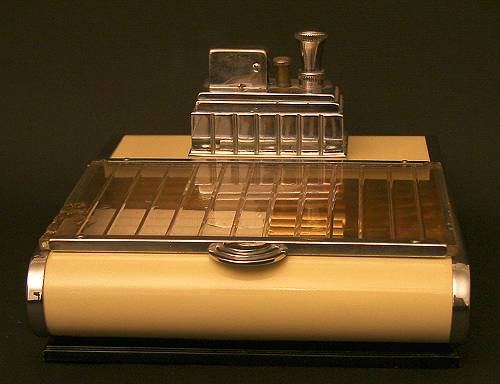 |
| Ronson Touch-Tip Lighter With Compact 1930s |
Ronson Cream Touch Tip With Lucite Cigarette Box 1930s |
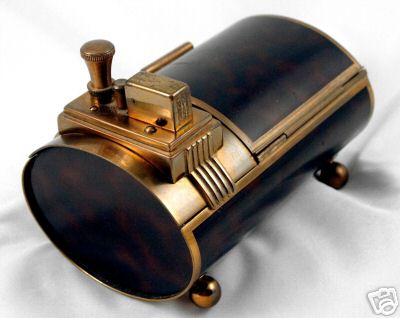 |
 |
| Ronson Touch-Tip With Cig Box 1930s |
Ronson Touch-Tip With Cig. Compartments 1930s
|
 |
Assorted World War I & II Trench Lighters |
 |
Assorted World War I & II Trench Lighters |
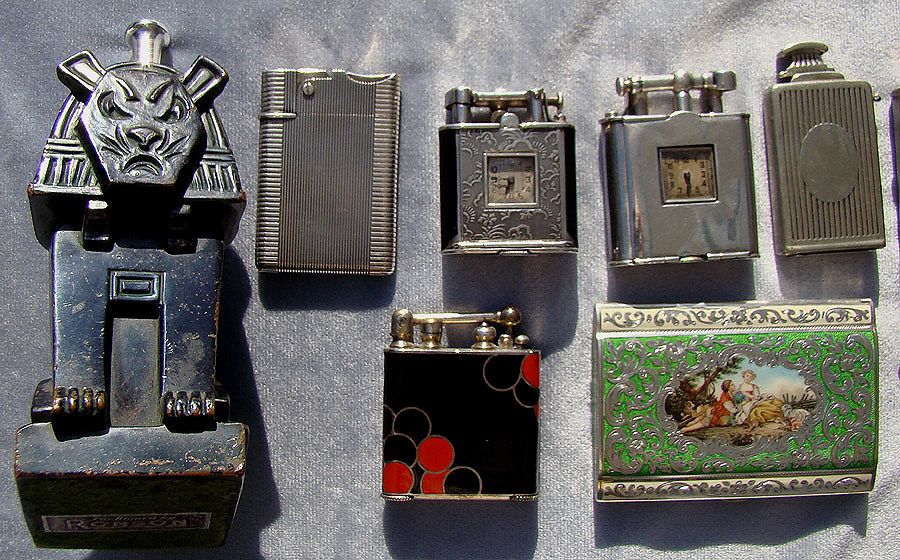 |
|
Assorted Ronson "Sphinx" striker. Asprey silver wafer, enamel Douglass. Watch Lighters
|
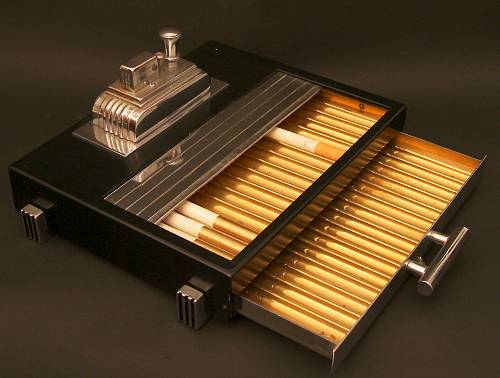 |
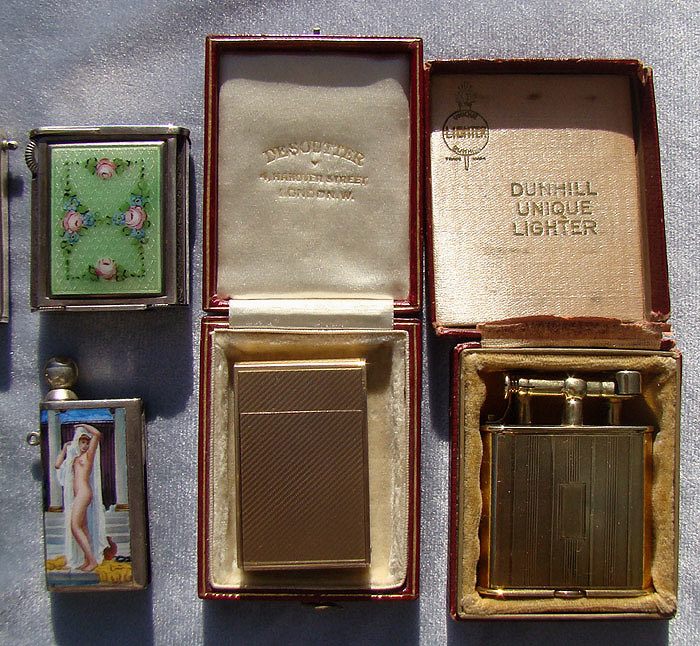 |
|
Ronson Touch-Tip With Cigarette Drawers 1930s
|
R&G Enamel Silver, Austrian Enamel Striker, Asprey Gold Concealed 9ct Gold Lighter, Dunhill 14k gold lighter in box. |
|
|
 |
|
Sterling silver and lacquer Clark table lighter 1920s
|
Dunhill Silent Flame Sun Tower Bldg 1940s
|
 |
 |
Cartier Art Deco 18kt gold watch lighter ca.1930s |
Cartier Art Deco Sterling silver enamel watch lighter ca.1930s |
Books on Cigarette Lighters | Home | Gallery 1 | Gallery 2 | Gallery 4| Gallery 5 |
For Sale 1 | For Sale 2 | For Sale 3 | For Sale 4 | Links
© 2022, Vintagelightersnj.com. All rights reserved.
Website Design by Stuart Schneider